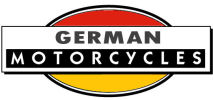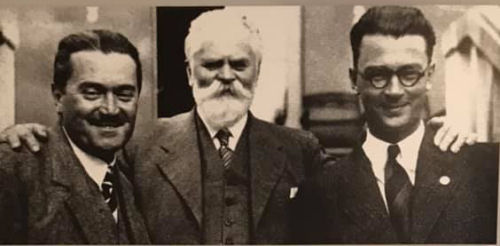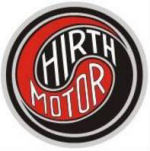




Hellmuth Hirth b.1886, Albert Hirth b.1858, Wolf Hirth b.1900

Engine & Pistons
Ziel war die Entwicklung standfester Kolben aus "Elektron", einer Aluminium-Magnesium-Legierung. Dieses Elektron war gegenüber dem bislang verwendetel Aluminium-Kupfer-Gemisch leichter. Und damit geeignet für höhere Drehzahlen.
Der ökonomischste Weg zum Test lag in kleinen Motoren - günstige Versuchssträger dafür waren Motorräder! Also fungierten die Hirthschen Zweiräder in erster Linie als Belastungsobjekt für den neuen Werkstoff.
Allen Maschinen aus der Hirthschen Schmiede gemein waren Zweitaktmotoren mit Doppelkolben. Mal mit zwei, dann mit Vier Kolben. mal stand der Oder die Zylinder, mal lagen sie. Die Motorräder aus dem Cannstatter Versuchsbau besaßen allesamt Wasserkühlung. Die zwei Pleuel jedes Zylinders liefen nebeneinander auf einem gemeinsamen Hubzapfen der Kurbelwelle. Der lang-gezogene Brennraum im Zylinderkopf mit einer zentraen Zündkerze war dadurch konstruktionsbedingt natürlich schrägliegend.
Erfolgreiche Fahrer der „Hirth"-Rennmaschinen
· Wolf Hirth
· Erwin Gehrung
· Franz Islinger
The goal was the development of solid pistons made of "electron", an aluminum-magnesium alloy. This metal was lighter than the aluminum-copper alloy currrently in use, and thus suitable for increased engine speeds.
The most economical method of development was to use small engines - inexpensive experimental motorcycles. So Hirth's two-wheelers acted primarily as a test-bed for the new material.
Common to all machines from the Hirth workshop were two-stroke engines with double pistons. Sometimes with two, then with four pistons. The motorcycles from the Cannstatter experimental building all had water cooling, and the two connecting rods of each cylinder ran side by side on a common crankshaft crankpin. The combustion chamber in the cylinder head had a central spark plug.
Successful riders of the "Hirth" racing machines
· Wolf Hirth
· Erwin Gehrung
· Franz Islinger
The Hirth coupling (or Hirth joint) was developed by Albert Hirth, the elder of the three brothers, for use in aviation engines. It has a great many applications and was used, for example, in the Adler twins of the 1950s. The Hirth-Verzahnung is currently in use in aviation turbine engines, surgical operating equipment, bicycle cranks and photography gear (rosette).
Notes 1. Shemp-Hirth gliders have won more world championship events than any other brand - in fact, more than all the other brands combined. World records include a soaring flight in the Andes of over 3000 km by Klaus Ohlmann, who has also soared over Mount Everest.
Sources: François-Marie Dumas, Wikipedia, Zweirad Museum, schempp-hirth.com
If you have a query or information about Hirth motorcycles please contact us